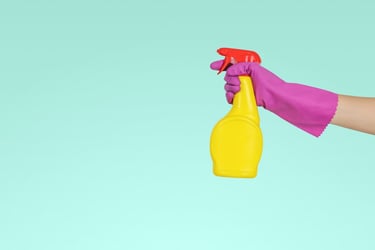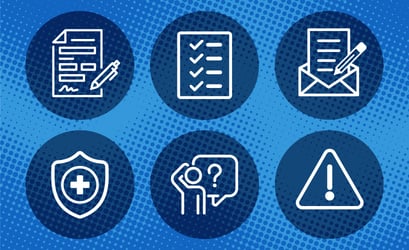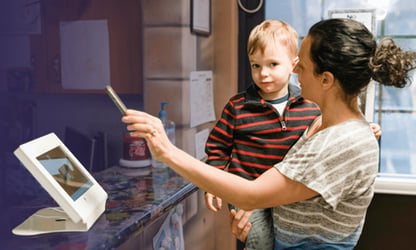Parents and guardians expect daycare providers to make child safety a top priority. It takes more than having a basic first aid kit for the occasional bump and bruise to keep an entire classroom of children safe during the day.
Our child care health and safety checklist will help you assure parents their children will be safe throughout the day in your care.
Location Security
When families drop off their children at your daycare, they need to be confident your center is safe and secure. You don’t need prison-level security, but you do need to have safety measures and systems in place so your building is safe for you, your staff, and the children.
-
- Position security cameras around your daycare center. One camera should face your parking lot, one needs to be facing the front desk, and other cameras should monitor areas inside the daycare center.
- Put exterior-locking childproof locks on all doors and windows.
- Schedule regular building health and cleanliness inspections.
- Create a sign-in and sign-out system for visitors and non-family members.
- Clearly post your federal, state, or local child care center accreditations or certificates where parents and potential customers can see.
Physical Safety
Children can get into all sorts of trouble during playtime. Your daycare center and playground needs to be as child-friendly as possible to keep them from getting harmed during the day. These safety measures should mostly be put in place before you open your facility, but regular upkeep or maintenance may be necessary.
-
- Regularly check playground equipment for splinters, protruding nails, rusty areas, or other parts that may need repair.
- Keep all unused electrical outlets covered with tamper resistant safety covers.
- Put foam padding on hard floors and put down shock-absorbing material under any playground equipment.
- Cover any sharp corners with foam or other soft materials.
- Keep all electrical cords out of reach of children and away from walking areas.
- Keep a gate at the top and bottom of staircases if you’re caring for babies and toddlers.
- Make sure toys, furniture, and playground equipment are in good condition.
- Regularly check your center for water damage, cracks and holes in the walls, mold, and pets.
Emergency Preparedness
Your center needs to be prepared for any natural disaster or emergency situation that may occur during operating hours. How you should handle a power outage, data breach, or active shooter is different than how you should handle a fire, hurricane, or earthquake. Create a plan for each situation so you can keep your child care staff, yourself, and the children in your care safe no matter what happens.
-
- Keep designated emergency exits clear from toys, furniture, or other objects at all times.
- Regularly test and replace fire extinguishers smoke detectors.
- Regularly test carbon monoxide detectors.
- Schedule regular emergency situation tests and ensure staff are aware of their role in an emergency.
- Have a strong data security plan in place to keep people from stealing sensitive and personal customer information.
- Place posters with emergency procedure information around the center. Include phone numbers for Poison Control, Child Protective Services, your local fire and police centers, and a map of the building with emergency exit locations.
- Share your emergency plans with parents and let them know what they should do in case of an emergency and how to contact you.
Health Precautions
The individual health of the children in your classroom is also your responsibility as their daycare provider. Aside from keeping band-aids close at hand, there are other things you should do to make your daycare a safe place for the kids’ physical health.
-
- Keep a well-stocked first aid kit in every room— they should be easily accessible for employees and out of reach of children.
- Any over-the-counter medications should be in their original containers.
- Any prescription medication parents give you for their child should be stored in their original bottle and inside a childproof container. The bottle should be labeled with the childs’ name, pharmacy name, instructions, dosage, and warnings.
- Have a thorough daycare cleaning plan in place to slow the spread of illnesses.
- Make sure staff are aware of any children’ food allergies, and have an emergency EpiPen in case of an allergic reaction.
From the moment a child steps foot on your daycare premises until they get picked up at the end of the day, their safety is your responsibility. You should revisit this daycare safety checklist on a regular basis to ensure you’re not forgetting any important safety measures. It not only keeps kids safe, it also gives parents peace of mind throughout the day, knowing their children are safe in your hands while they’re away.








